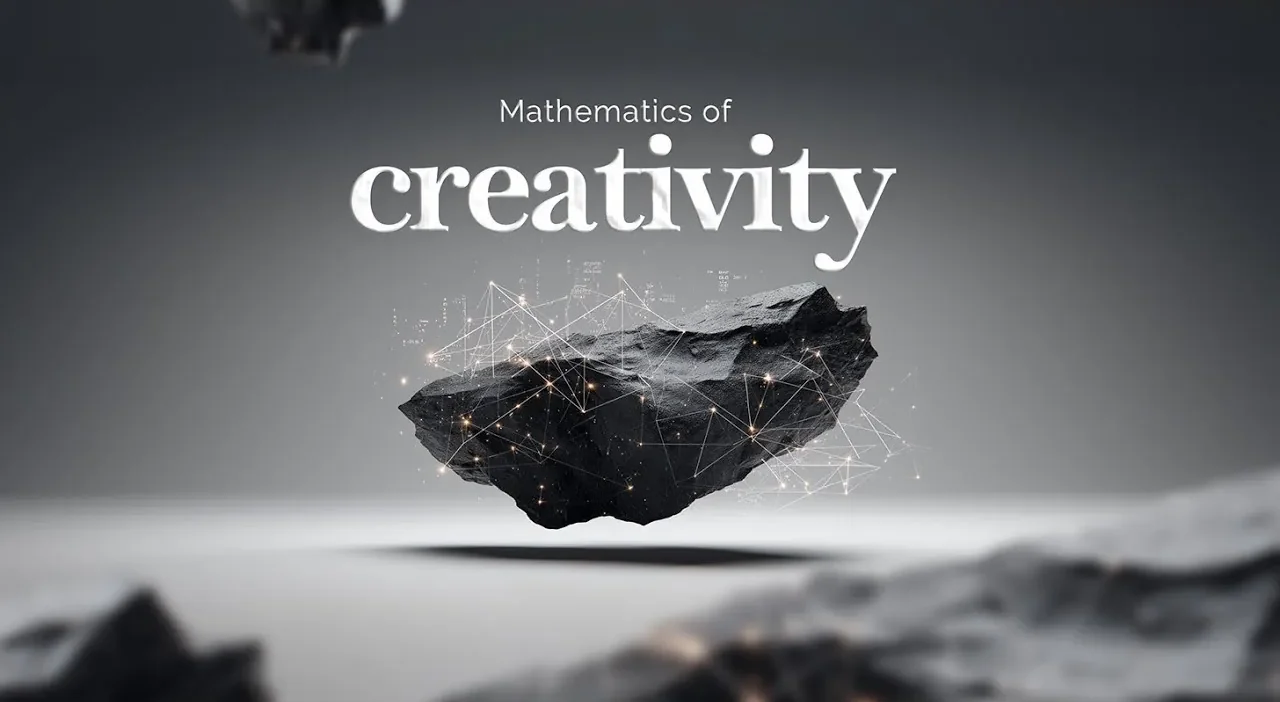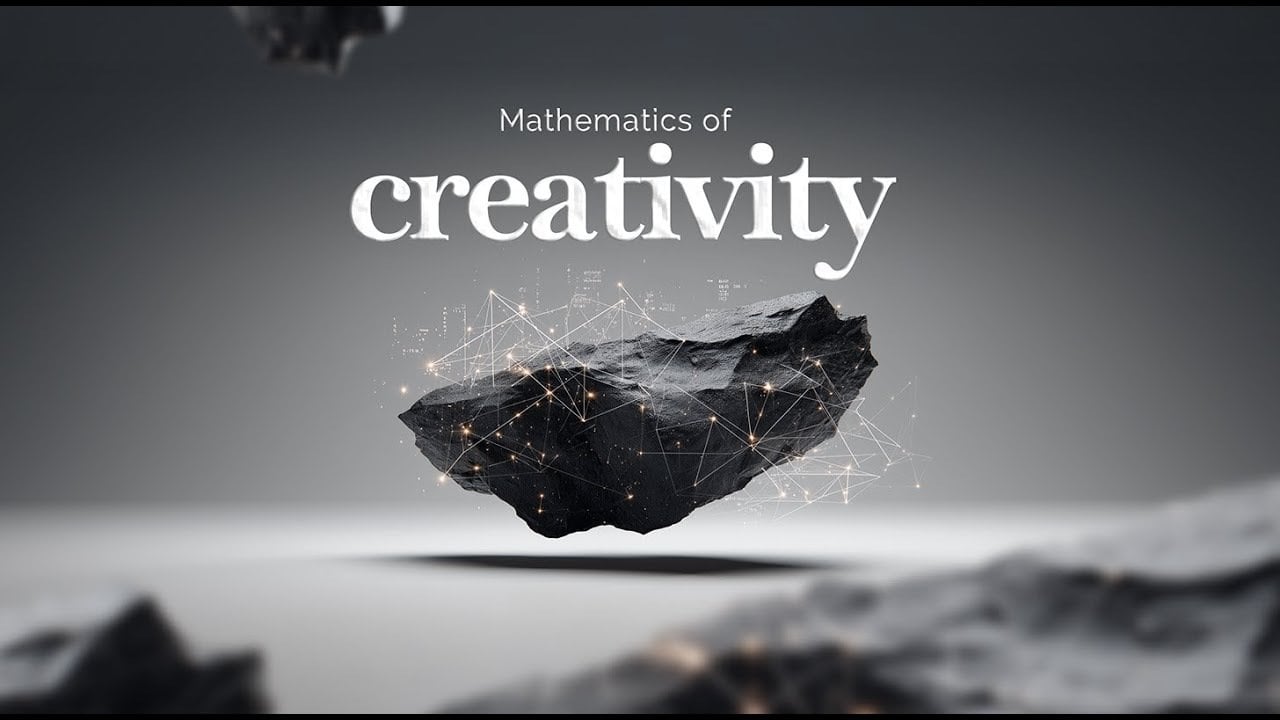
What if creativity wasn’t the enigmatic, unpredictable spark we’ve long romanticized, but instead followed a set of underlying principles, almost like a formula? Imagine if the brilliance of a Picasso painting or the ingenuity of an Edison invention could be traced back to patterns and structures as precise as mathematical equations. It’s a bold claim, but one grounded in evidence: genius is not as random as it seems. From the statistical probability of breakthroughs to the combinatorial magic of remixing ideas, creativity reveals itself as a process that can be understood, nurtured, and even optimized. The notion that genius is more method than mystery challenges everything we think we know about how extraordinary ideas are born.
In this exploration, XenoSphere Originals uncover how mathematical concepts like probability, Zipf’s Law, and exponential growth illuminate the mechanics of creativity. You’ll see why prolific output often precedes innovation, how recombining existing ideas can lead to new discoveries, and why balancing chaos with order is essential for creative success. But this isn’t just about theory, it’s about unlocking your own potential. By understanding the frameworks that geniuses have intuitively followed, you’ll gain practical insights to approach your own creative endeavors with clarity and purpose. Perhaps genius isn’t reserved for the few, it’s a formula waiting to be applied.
The Mathematics of Creativity
TL;DR Key Takeaways :
Creativity is not random but aligns with statistical probability; prolific output increases the chances of achieving extraordinary results.
Zipf’s Law explains that most creative outcomes are average, with only a few being exceptional, emphasizing the importance of quantity over perfection.
Combinatorial creativity involves reimagining and recombining existing elements to generate innovative ideas and solutions.
Mastery in creativity requires time and effort, following an exponential growth curve where persistence leads to significant breakthroughs.
Creativity thrives at the balance between chaos and order, where structured randomness fosters innovation and meaningful connections.
Why Creativity is Not Random
Creative success is not a matter of chance. It aligns with statistical probability: the more you create, the greater your chances of producing something extraordinary. Historical examples illustrate this principle clearly. Thomas Edison, for instance, held over 1,000 patents, yet only a small fraction of his inventions became iconic. Similarly, Pablo Picasso created tens of thousands of artworks, but only a select few are universally celebrated.
These examples highlight a critical insight: prolific output often precedes creative breakthroughs. The sheer volume of attempts increases the likelihood of achieving something remarkable. This principle applies across disciplines, from art and science to business and technology. By focusing on consistent effort and experimentation, you can improve your odds of success and uncover unexpected opportunities for innovation.
Understanding Zipf’s Law in Creativity
Zipf’s Law provides a framework for understanding the distribution of creative outcomes. In any field, the majority of ideas or creations are average, some are good, and a rare few are exceptional. This predictable pattern is evident across various disciplines:
In music, only a small percentage of songs achieve chart-topping success.
In literature, a handful of books become bestsellers while most remain relatively unknown.
In digital content, viral posts represent a tiny fraction of the total output.
This distribution underscores the importance of prioritizing quantity over perfection. Instead of striving to make every idea flawless, focus on generating a high volume of work. Over time, exceptional outcomes will naturally emerge from the larger pool of efforts. By embracing this mindset, you can reduce the pressure to achieve immediate perfection and instead allow creativity to flourish through persistence.
Why Genius Follows a Formula
Expand your understanding of creativity and mathematical principles with additional resources from our extensive library of articles.
Combinatorial Creativity: Building on What Exists
Creativity often arises from recombining existing elements in new and innovative ways, a process that mirrors mathematical permutations and combinations. By rearranging known components, you can generate novel possibilities and solutions. This concept, known as “combinatorial creativity,” is evident in numerous fields:
Hip-hop artists sample existing music to craft fresh and original tracks.
Meme culture transforms familiar visuals into new forms of commentary and humor.
Scientific breakthroughs frequently build upon prior discoveries, connecting established ideas in unexpected ways.
The key to unlocking combinatorial creativity lies in recognizing the potential of what already exists. By exploring new combinations and perspectives, you can uncover innovative solutions and create something entirely unique. This approach emphasizes that creativity is not about inventing from scratch but about reimagining and reconfiguring the familiar.
The Role of Time and Effort in Mastery
Developing creative skills follows an exponential growth curve. Early efforts may feel slow and unproductive, but sustained practice leads to accelerated improvement over time. This concept is reflected in the widely discussed “10,000-hour rule,” which suggests that mastery in any field requires consistent, deliberate practice.
Whether you’re learning to paint, write, or compose music, time and effort are essential for growth. The exponential nature of skill development means that persistence often leads to unexpected breakthroughs. By dedicating yourself to regular practice and experimentation, you can unlock your creative potential and achieve levels of mastery that once seemed unattainable.
Balancing Chaos and Order
Creativity thrives at the “edge of chaos,” where randomness and structure coexist in harmony. Too much randomness leads to incoherence, while excessive structure stifles innovation. Complexity theory demonstrates that systems operating at this delicate balance are most likely to produce meaningful and unexpected connections.
Consider brainstorming sessions as an example. When free-flowing ideas are encouraged within a structured framework, the results are often more innovative and impactful. By embracing this balance, you can create an environment where creativity flourishes naturally. This principle applies not only to individual efforts but also to team dynamics, organizational strategies, and even societal innovation.
Creativity as a Formula
Creativity is not an unfathomable mystery; it is governed by mathematical principles that shape probability, recombination, time investment, and the balance between chaos and order. By understanding these frameworks, you can approach creativity with a greater sense of purpose and confidence.
Whether you’re an artist, scientist, entrepreneur, or innovator in any field, these principles offer a roadmap for unlocking creative success. Genius, as it turns out, often follows a formula, one that you can learn to apply. By embracing these insights, you can transform your creative process into a structured yet flexible journey toward innovation and discovery.
Media Credit: XenoSphere Originals
Filed Under: Guides
Latest Geeky Gadgets Deals
Disclosure: Some of our articles include affiliate links. If you buy something through one of these links, Geeky Gadgets may earn an affiliate commission. Learn about our Disclosure Policy.
